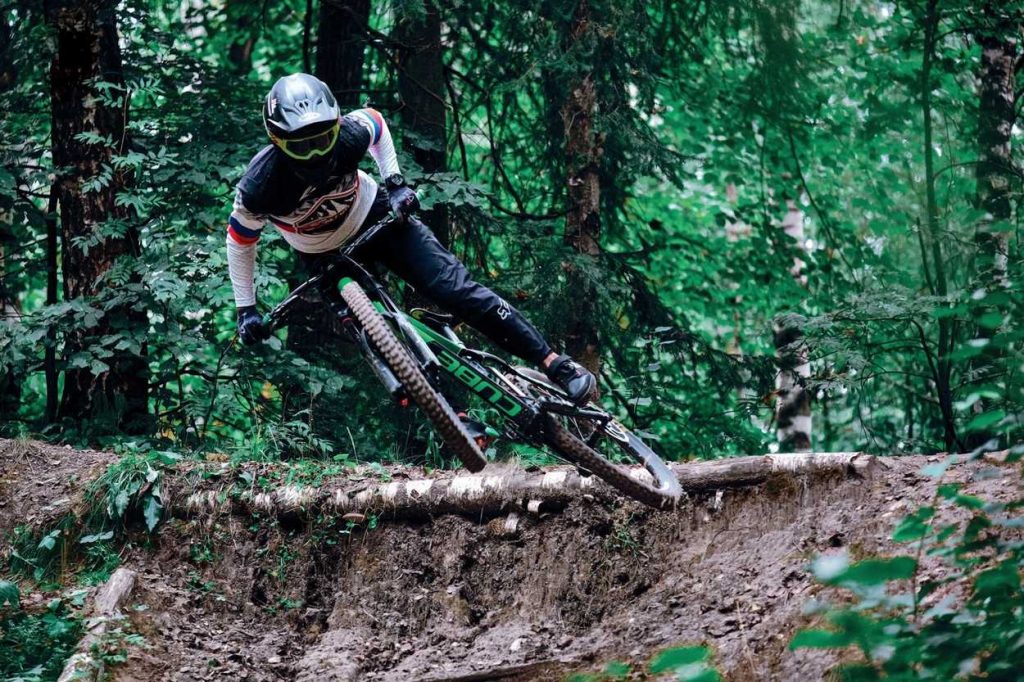Legal aspects
Building a trail without permission is out of the question. Illegal MTB trails raise negative emotions poised against the bike community and, sooner or later, they might end up closed, sabotaged or dismantled by the proprietors, hunters or hikers. Anytime you have the idea to build a trail, do your best to find the owners of the property to make an agreement in favour of mountain biking. Be it a forest in private hands or state-owned grounds, the owners, respectively responsible persons, might be surprised by your idea. Telling them squarely about your plans is still better than to start digging without permission and waiting until someone notices. Prejudice against mountain biking in some countries can make it a difficult task yet if you persuade the owner about the temporary nature of your builds, the feedback might be unexpectedly positive.

Terrain inspection
Walking down the hill from top to bottom is the first step to do. Try to imagine the route direction with available natural features integrated. Experienced trails builders use elements like rocks, bumps, walls, drops, fallen trunks and place these onto the route as if they were jewellers, stringing pearls into a necklace. While planning, eschew wetlands that would turn your trail impassable even after just a little bit of rain. The best time for the first terrain scouting is after rain when dry areas can be easily distinguished from those soaked in running water.
Decision making
Each rider likes something else. While some prefer steeps and technical trails full of slippery roots, steps and rock gardens, others focus mainly on flow. With you in the role of the new master builder, it is up to you to decide. The most popular trails offer a lot of fun due to features tied together so the ride is smooth and uninterrupted. While downhill trails might have a steeper incline, flow trails should be gentler with no more than 5% slopes. If you manage to design a trail so it uses the given space effectively, you can win a much longer ride. You can imagine it as a toboggan that the architect crammed into the limited space of the indoor aqua centre. Leading the trail with only a gentle slope sometimes requires digging the trail into the hillside to create a bench profile. To prevent water from gathering on the surface, make it slightly inclined.
https://www.instagram.com/p/CE_ZRjiil_f/?utm_source=ig_web_copy_link
Sustainability
Building jumps is trickier as it consumes a lot of material that you either have to gain at the location or bring from elsewhere. We recommend avoiding moving a different kind of soil to the place as it looks strange and is not following the principles of sustainability. For the same reason, stay away from cutting living trees and grown plants. The trail should be constructed in visual harmony with the rest of the landscape. If the trail looks nice and neat, it has a higher chance to stay intact by other forest users.
Flow
Building a trail with lots of flow means riders can go through it smoothly and with no need for excessive braking. It does not only make the trail playful and entertaining but also contributes to its lifespan as braking creates ruts and damages, mainly before turns. The radius of the turns should correspond to the estimated entering speed. The higher the speed, the bigger the radius. The only way to find the correct proportions is to have a lot of experience or check the appropriate speed by bike. To keep the cruising velocity, it is advised to build banked turns, which are called “berms” by bikers. High berms allow high-speed passing and are a lot of fun to ride but require a lot of material. Proper drainage is crucial in their design.
https://www.instagram.com/p/CGPu9i0C_Ge/?utm_source=ig_web_copy_link
Water management
Rain and running water can cause heavy damage to any type of trail. Long, straight and steep parts can act as a chute where water collects and runs through them like a channel, destroying everything that stands in its path. Also, flat places end up being lakes. Drainage is key for leading the water out of the trail. To allocate the most vulnerable places, walk the trail after it rained and dig troughs along the roots using a garden hoe to let the water flow away.
Tools
Several hand tools will be necessary to build and shape the trail. Quality and more expensive instruments will perform longer and reduce your efforts. A spade is a basic tool useful for digging compacted ground. A shovel will help you to move soft material such as soil, sand or dirt. To build the berms, you will need a lot of material that can be moved with little effort if you loosen it. A long handle is preferable for reducing the muscle strain needed to move the soil from the source to the trail. While a folding saw will do the job when it comes to chopping shrubs and removing branches, a splitting axe comes in handy whenever you need to fight stubborn roots out of the trail bed. A hoe is the right tool for removing plants, slicing off small roots or digging a trough to let the water run off the trail. A mattock with one sharp end to rip and dig and the other to cut and slice will do the hard work while loosening the soil, gaining the material, and forming the slopes. We wish you lots of creativity when building your own lucky trails.




